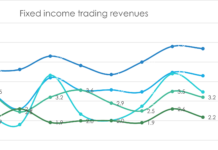Fixed income traders still lack the direct connectivity they need to protect pricing and control data flow, according to leading buy-side stakeholders.

Speaking at the Fixed Income Leaders’ Summit, Juan Landazabal, global head of trading at GAM International, said innovation that would better link the buy and sell sides had been severely stunted, highlighting the ‘zero or very little progress’ made in terms of effective distribution of axes.
“We need more direct connectivity with the sell side, or at least with our key counterparts,” he said. “Certain platforms have tried to do something, but the direct connectivity is not there.”
Landazabal also criticised the new issue market describing it as ‘very old school in its way’ and said the lack of technological innovation affected pricing. He said a lack of direct connectivity meant that the buy side was unable to control prices or data.
“One reason for wanting DC is clearly cost and to get sharper pricing but another is data and being able to control information and not needing to use an in intermediary or platform,” he said.
Mauricio Sada-Paz, global head of eFICC distribution and product at Barclays, said the limited direct connectivity was also a challenge for the sell side, arguing that the FX market was far ahead of its fixed income counterparts when it came to direct connectivity.
“For banks like ourselves it is always hard to connect with every single client like we can with FX. We need a utility in the middle where you can connect and distribute prices to others,” he said. “The buy side is concerned about the future market structure because the incumbent venues will have a lot of pricing power and that will hurt the price that they will get their clients.”
©The DESK 2019
©Markets Media Europe 2025







